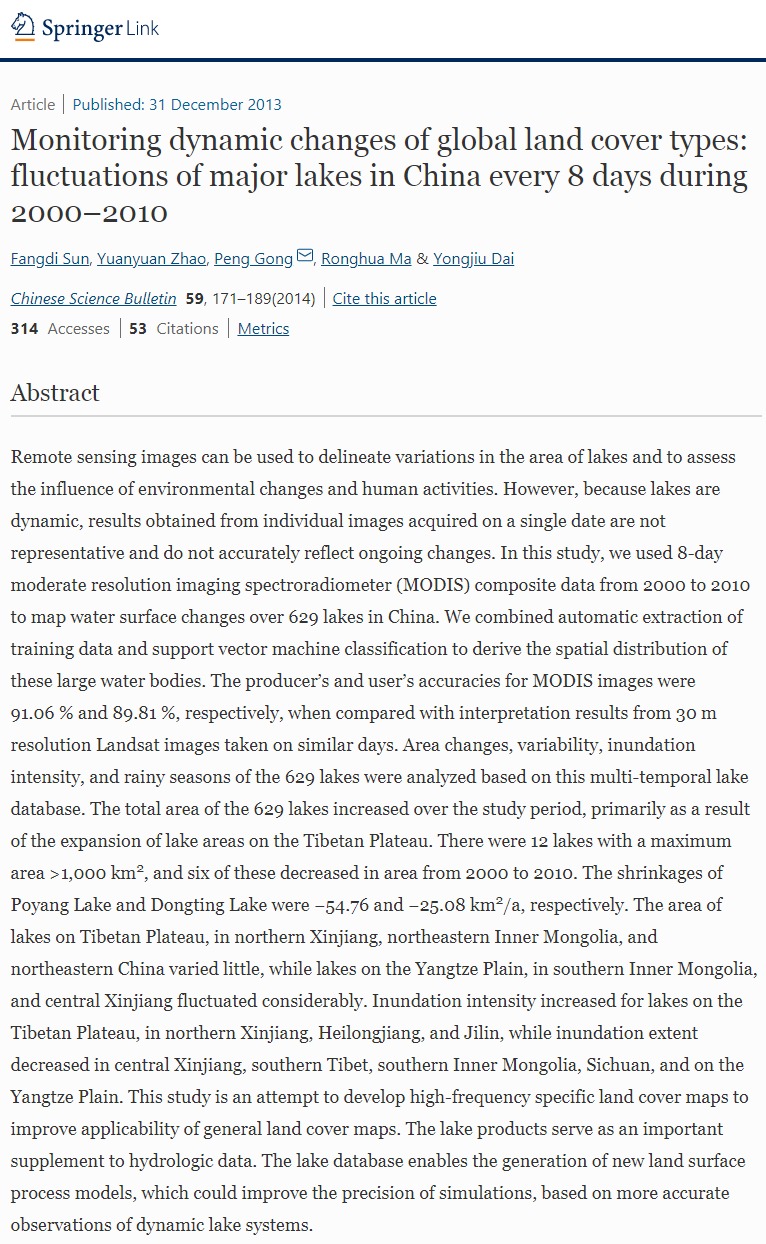
Remote sensing images can be used to delineate variations in the area of lakes and to assess the influence of environmental changes and human activities. However, because lakes are dynamic, results obtained from individual images acquired on a single date are not representative and do not accurately reflect ongoing changes. In this study, we used 8-day moderate resolution imaging spectroradiometer (MODIS) composite data from 2000 to 2010 to map water surface changes over 629 lakes in China. We combined automatic extraction of training data and support vector machine classification to derive the spatial distribution of these large water bodies. The producer’s and user’s accuracies for MODIS images were 91.06 % and 89.81 %, respectively, when compared with interpretation results from 30 m resolution Landsat images taken on similar days. Area changes, variability, inundation intensity, and rainy seasons of the 629 lakes were analyzed based on this multi-temporal lake database. The total area of the 629 lakes increased over the study period, primarily as a result of the expansion of lake areas on the Tibetan Plateau. There were 12 lakes with a maximum area >1,000 km2, and six of these decreased in area from 2000 to 2010. The shrinkages of Poyang Lake and Dongting Lake were −54.76 and −25.08 km2/a, respectively. The area of lakes on Tibetan Plateau, in northern Xinjiang, northeastern Inner Mongolia, and northeastern China varied little, while lakes on the Yangtze Plain, in southern Inner Mongolia, and central Xinjiang fluctuated considerably. Inundation intensity increased for lakes on the Tibetan Plateau, in northern Xinjiang, Heilongjiang, and Jilin, while inundation extent decreased in central Xinjiang, southern Tibet, southern Inner Mongolia, Sichuan, and on the Yangtze Plain. This study is an attempt to develop high-frequency specific land cover maps to improve applicability of general land cover maps. The lake products serve as an important supplement to hydrologic data. The lake database enables the generation of new land surface process models, which could improve the precision of simulations, based on more accurate observations of dynamic lake systems.